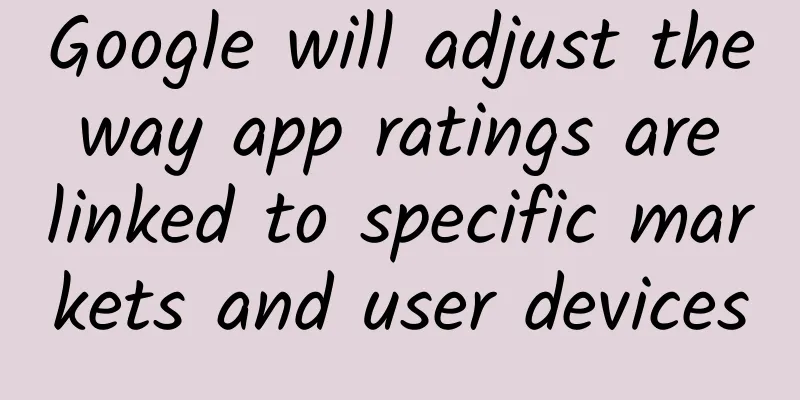Google will adjust the way app ratings are linked to specific markets and user devices

|
On August 24, Google announced on Monday local time that it will change the way its app store Play Store calculates and displays app ratings, making app ratings more relevant to the developer market and more beneficial to users. It is reported that compared with the fixed rating of applications, Google Play will give applications multiple ratings based on different markets and different devices used by users. This means that the screen sizes of devices used by users to browse the Google Play Store are different, and the ratings displayed for the same application are also different. This change could be beneficial. For one thing, not all apps offer the same functionality in all markets, and an app developer wouldn’t want to see their app’s ratings suffer because they can’t activate payment in a particular market. Another, more important reason: some apps are only suitable for larger tablets or foldable devices, and some apps have problems running on Android devices other than phones. So device-specific ratings for apps mean that when users download an app on a tablet, they’ll know in advance that it won’t work as well as on a phone.
Google plans to launch app-specific ratings for different markets in November this year, and different ratings for different types of devices such as tablets, foldable devices, Chrome OS, Wear OS or Android Auto in 2022. If Google's new way of calculating ratings will change the ratings of existing apps, the company will notify developers in advance. Google said, "Before adjusting the Google Play Store rating method, we will automatically analyze the rating changes of the application at least 10 weeks in advance. If the rating adjustment of your application is greater than 0.2 stars, we will notify you in time. This way, you have enough time to modify the application." Considering the increasing popularity of foldable devices such as the Samsung Galaxy Z Fold 3 or Z Flip 3, Google's adjustments should help both users and developers. After all, not all apps can be adapted to foldable phones, and if they are not adjusted, users of these devices are likely to give bad reviews due to poor user experience. |
<<: 10 product details analysis to show you how big manufacturers design!
Recommend
Annoying phone battery life: It’s not the battery’s fault
The functions of the smartphones we use nowadays ...
Hunter e-commerce · Toutiao's brick-moving gameplay makes a profit on the same day, and the account starts in three days (exclusive)
Hunter e-commerce · Toutiao's brick-moving ga...
African kids wish North Korea happy birthday video
A simple small blackboard with words written on i...
Zhihu order number 2500 cash income, a batch of brainless operation to earn 30,000 a month money-making project (black)
Yesterday, I spent the past two days struggling ov...
Gene-edited insects: Small yet powerful
Produced by: Science Popularization China Author:...
APP UI design trends: moving for good design
Pleasing animation has become a must for an app, ...
Apple iOS 15 will be officially released next month. What should iOS 14 users do? Here are some opinions
Every year on the eve of Apple's new product ...
UN report: One-third of World Heritage glaciers could disappear by 2050
The United Nations Educational, Scientific and Cu...
Why do some medicines cause coma when taken as pieces, but some are fine when taken as chewed?
Some time ago, a news story about a woman who fel...
Eight crooked tricks for APP promotion! Have you ever used these tricks?
Nowadays, the popularity of APP is almost as high...
How to operate Kuaishou short video on behalf of others?
Kuaishou is a short video platform that has enter...
Monogamous seahorses may not be that stable!
Leviathan Press: Although most seahorses are mono...
iOS 13.6 beta test version released: You can manually turn off iOS automatic updates
Apple today released the second beta of iOS 13.6 ...
Internet mobile phones enter the knockout round, Xiaomi and others face deep distribution challenges
"What is the most powerful weapon I have? In...









